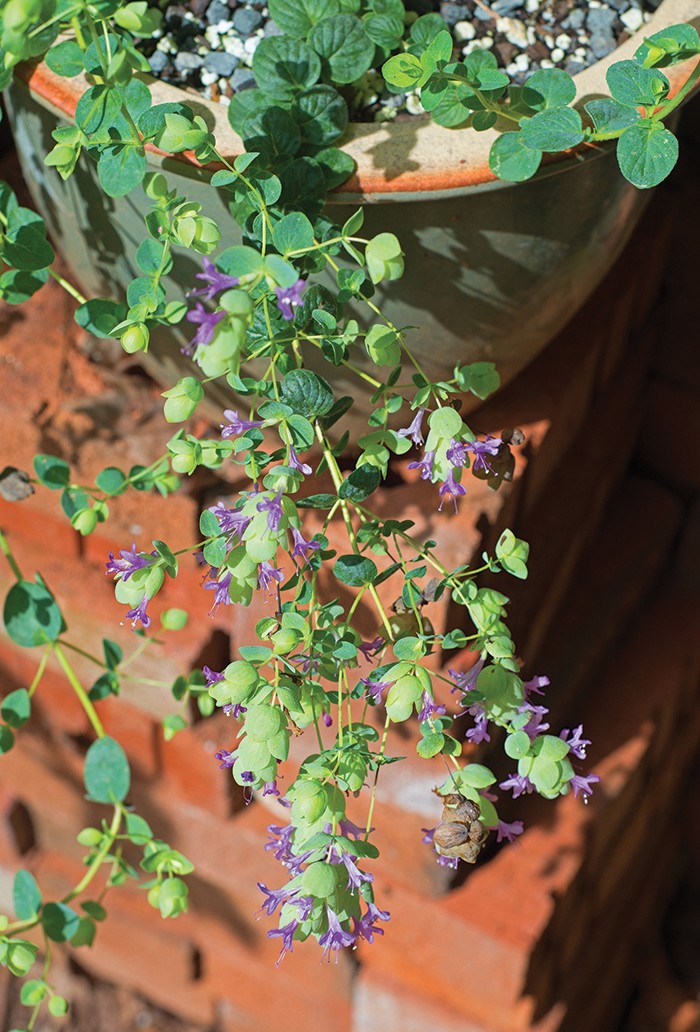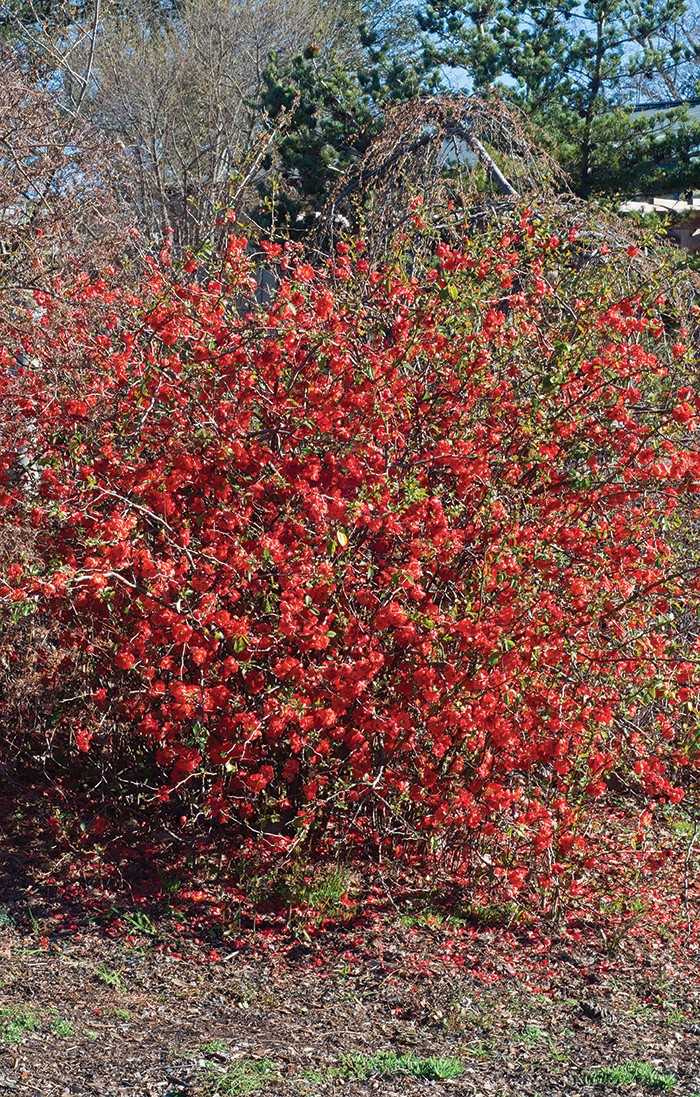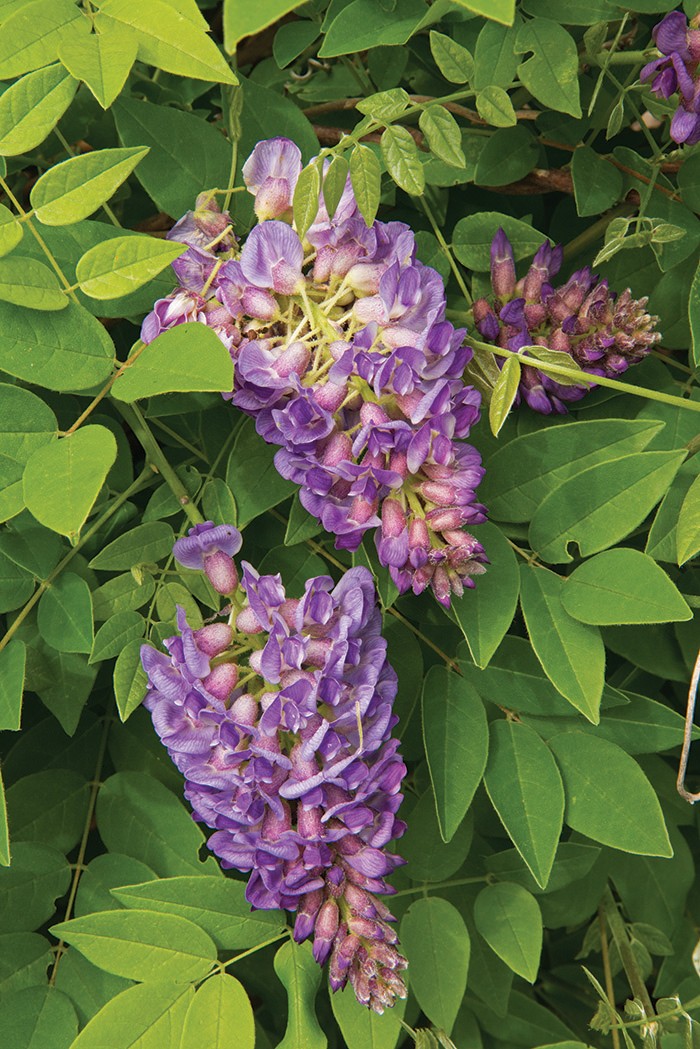In the wide, wide world of plant selection appellations, rare is the occasion when two names are not only the same but are also tagged to top-tier introductions quite capable of adding dependable, elegant interest to any garden setting.
So, sit back and let me tell you the tale of ‘Amethyst Falls’ and the two pretties linked by name. Both have the pleasing potential of being eye-catching additions to your garden this spring.
‘Amethyst Falls’ wisteria. Wisteria gets a bad rap for being invasive. True, this botanical brute of a vine can quickly cover trees, houses, cars or even the family cat if he isn’t fast enough, but such aggressiveness comes from two imports, Japanese wisteria (Wisteria floribunda) and Chinese wisteria (Wisteria sinensis). There is another kinder, gentler wisteria: Wisteria frutescens, which is actually native to the Southeast.
Commonly called American wisteria, it can stretch to lengths of 15 feet plus, but this is modest compared to the apocalyptic swaths of the Asian imports. Plant breeders, realizing the potential of a restrained wisteria, began to introduce improved selections from the species, and the popular ‘Amethyst Falls’ was one result.

‘Amethyst Falls’ oregano
Dripping with light purple, slightly fragrant racemes up to 12 inches long in late spring, ‘Amethyst Falls’ is a deer-resistant, drought-tolerant, sun-loving beauty that can add grace to a clunky fence or bare trellis. In addition, it is sterile, meaning no weedy seedlings will invade your landscape. And, no, it won’t be hard to find — I have spotted it at many local nurseries.
‘Amethyst Falls’ oregano. To many gardeners, when it comes to eye candy, oregano is generally considered a cute herb but not necessarily pretty. However, a new breed tagged “ornamental oregano” has made its fancy way into gardens with the selection ‘Amethyst Falls’ leading the charge.
This iteration of ‘Amethyst Falls’ kicks oregano’s visual show up a few notches in the late spring with flowing sweeps of small purple flowers contrasted by unusual, hop-like bracts. Its leaves are typically oregano-scented, meaning they can be used in the kitchen, and although we like the smell, deer don’t, so they won’t bother this herb.
‘Amethyst Falls’ is a tough plant that will take all the sunlight you can give it. Good drainage is essential, but this can be provided in a container or raised garden setting, where its cascading blooms can be displayed to full effect.
You might have to call around to locate ‘Amethyst Falls’ oregano locally. I got mine from Big Bloomers in Sanford, but it’s an easy find online.

Flowering Quince
To prune or not to prune? At this time of year, that is the question.
For woody ornamentals such as clethera, vitex, beautyberry, pomegranate, crepe myrtle, abelia, rose of Sharon and buddleia that flower in the late spring and summer on new branches formed in the current growing season, prune at the beginning of this month.
Early blooming woodies such as camelia (Camelia japonica), weigelia, mock orange, kerria, witch hazel, forsythia, flowering quince, deciduous magnolia, viburnum, spirea and Carolina jessamine blossom on established branches, so wait until their fancy flower shows are finished before snipping them into shape or down to a desired size.
To Do in the Garden
March
- Mint is a versatile culinary herb, but you should think twice before adding it to your spring beds, as it can easily crawl away and overwhelm planting areas. Containment makes for behaved mint — grow it in pots instead.
- Row, row, rowing your veggies again this year? For more efficient use of growing space, consider converting from rows to rectangular growing beds. To make them easier to reach into, don’t construct the beds more than four feet wide.
- Before garden chores get into full spring swing, start doing a moderate amount of stretching exercises to be limbered up for all the pushing, pulling, bending and stooping to come.
- Migratory garden friends on the wing should be returning now, so give them a great big welcome by cleaning up bird houses and washing the bird bath.
- Rhythm and Clues
- Road Trip to Pinehurst Leads to More Than Golf
- A View of North Carolina’s Historic Lighthouses
- The Arts Shine in Downtown Sanford
- Nonprofit Spotlight: Chinese American Friendship Association
- Big Little Gardens
- Small Business Spotlight: Campbell Road Nursery
- Garden Adventurer: A Tale of Two Pretties
- Worth the Drive: Saxapahaw General Store
- Liquid Assets: Octo Pils from Vicious Fishes Brewery
- Liquid Assets: Grateful Dead from Mellow Mushroom
- Liquid Assets: 3 Day Vacay!






